Vietnam’s capital, Hanoi, offers visitors a unique travel experience with its rich history, impressive architecture, and cultural diversity. Shaped over centuries by Chinese, French, and Soviet influences, the city blends the mystical atmosphere of the East with the elegant touches of the West. The streets of Hanoi reflect traces of the past while also gaining vibrancy from the rhythm of modern life. This unique atmosphere makes exploring the city both culturally and visually enjoyable.
Places to visit in Hanoi include a wide variety of categories such as historical structures, temples, museums, natural attractions, and bustling markets. From Hoan Kiem Lake, located in the heart of the city, to the UNESCO World Heritage-listed Imperial Citadel of Thang Long, and from traditional water puppet shows to ethnic museums, the city offers an itinerary that appeals to every interest. For those seeking cultural insight and an authentic Asian city experience, Hanoi is one of the most attractive destinations in Vietnam.
1. Hoan Kiem Lake (Lake and Ngoc Son Temple) – A peaceful lake and historic temple in the heart of the city.
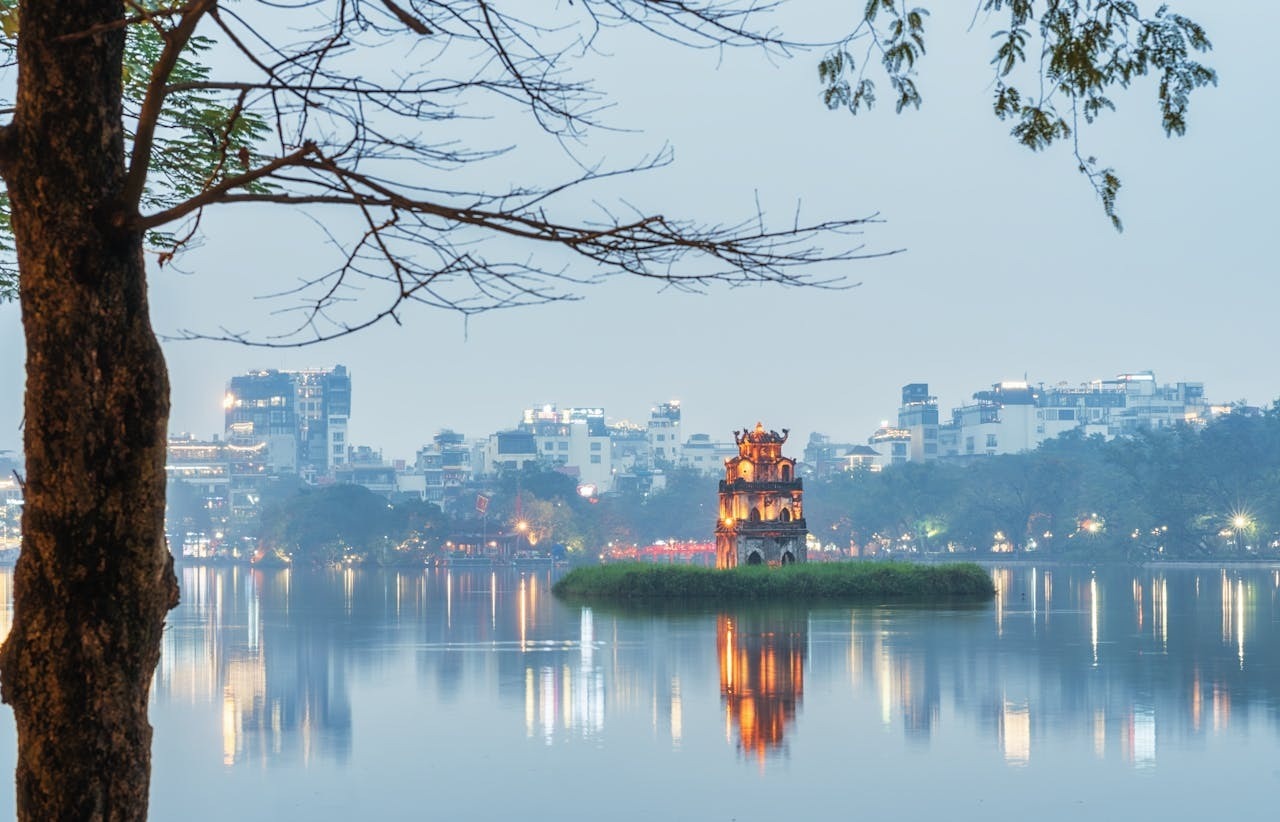
Hoan Kiem Lake is a captivating natural area located in the very heart of Hanoi and serves as a gathering point for both locals and tourists. Also known as the “Lake of the Returned Sword,” it takes its name from Vietnamese legends. According to the legend, a magical sword given to King Le Loi by a sacred turtle was returned to the lake by the same turtle after victory. This mythological story makes the lake not only a natural site but also a spiritual one. Surrounded by morning walkers, elderly people practicing Tai Chi, and visitors enjoying the scenery, the lake reflects the serenity and elegance of Hanoi.
Located on a small island in the middle of the lake, the Ngoc Son Temple is a historic structure that can be reached by walking across the graceful red The Huc Bridge. Built in the 18th century, the temple is dedicated to Confucius, the god of wisdom Van Xuong, and national hero General Tran Hung Dao. Inside are ancient altars, prayer areas, and traditional decorative elements. The island and the bridge are illuminated at night, offering visitors a visual delight. Hoan Kiem Lake and Ngoc Son Temple, which can be visited both during the day and at night, are must-see stops for those who want to feel the spirit of Hanoi.
2. Old Quarter – A historic district famous for its narrow streets, traditional shops, and street food.
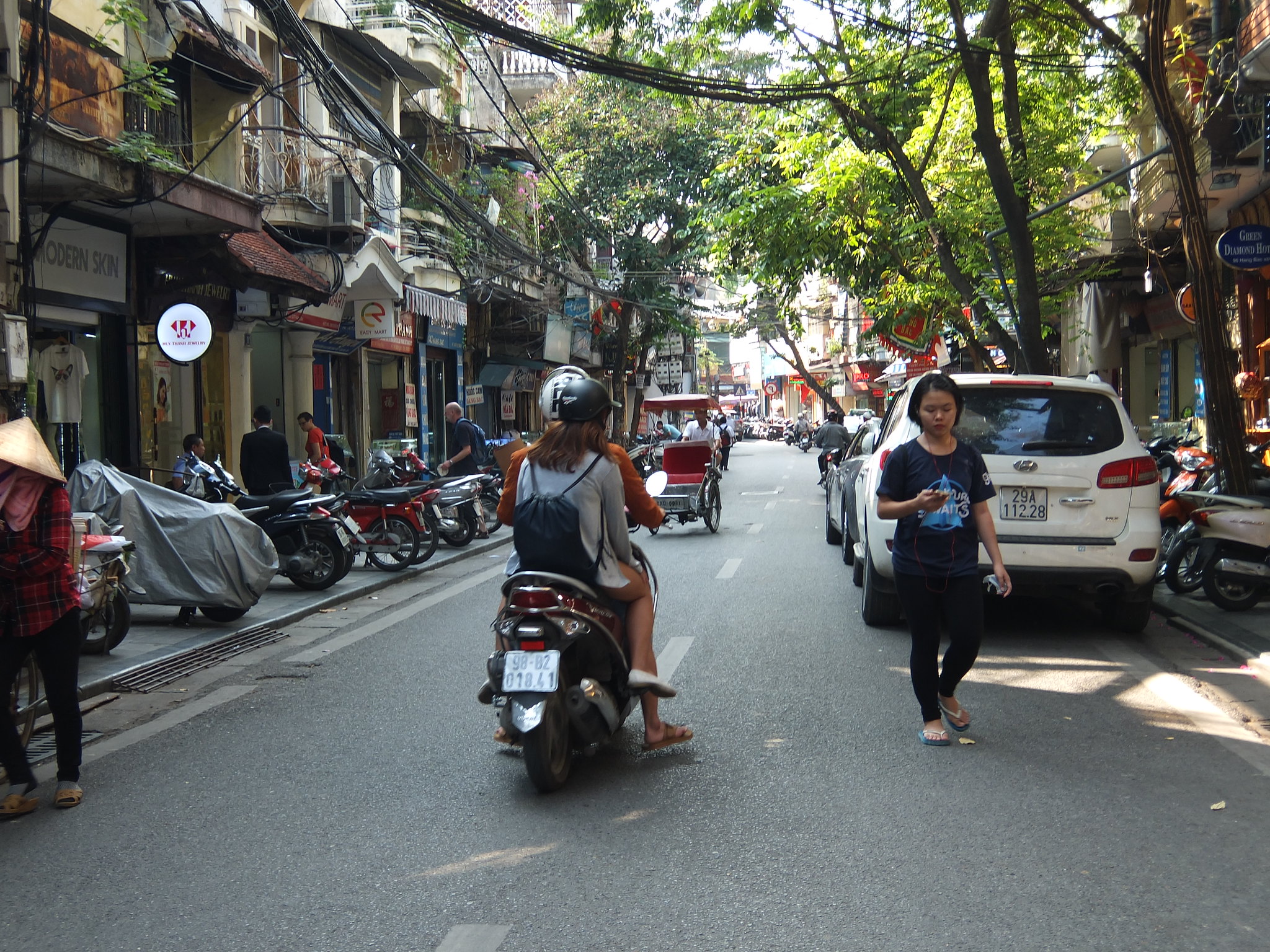
The Old Quarter is one of the areas in Hanoi where the historical texture of the city can be felt most intensely. With a history dating back hundreds of years, this district developed as the commercial and craft center of the city. Comprising 36 streets, each traditionally dedicated to a specific craft or product, the Old Quarter features many traditional handicrafts ranging from wood carving to silk embroidery. The narrow streets and historic buildings from the French colonial era give the area a nostalgic atmosphere, and strolling through them offers a unique opportunity to observe the transformation of Hanoi over time.
The Old Quarter is also the heart of Vietnamese cuisine. Street stalls and small restaurants serving local delicacies such as pho, bun cha, and banh mi turn the area into an open-air food festival. In the mornings, the streets are filled with the aroma of coffee, while in the evenings, they come alive with colorful lanterns and crowded tables. Visitors here experience not only shopping and food but also an authentic city atmosphere. With its vibrant ambiance, cultural richness, and integration of daily life, these streets reflect the spirit of Hanoi in its purest form.
3. Ho Chi Minh Mausoleum – The memorial tomb of Vietnam’s founding leader.
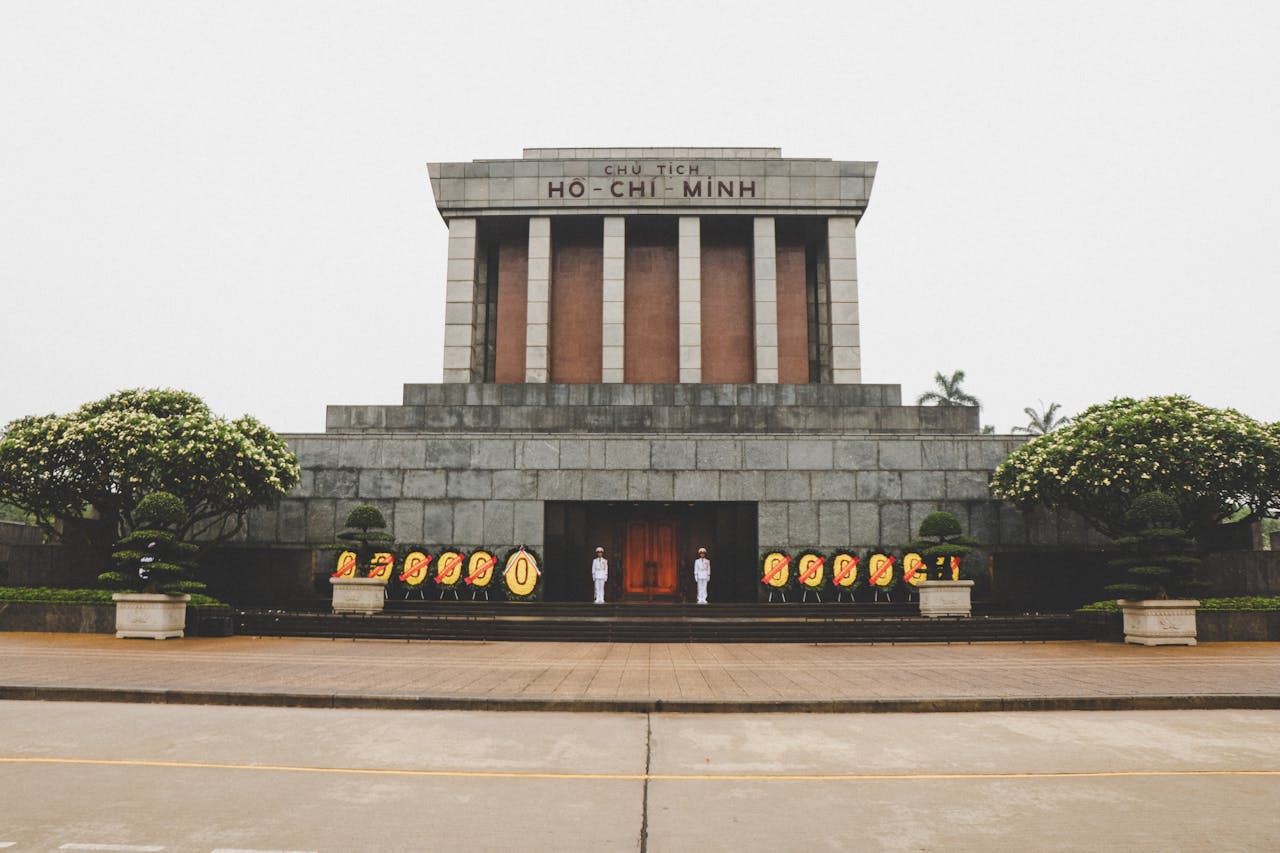
The Ho Chi Minh Mausoleum is a grand memorial tomb that houses the embalmed body of Ho Chi Minh, the symbolic figure of Vietnam’s struggle for independence. Located in Hanoi’s Ba Dinh Square, this structure holds great historical and emotional significance for the Vietnamese people. Completed in 1975, the mausoleum stands out with its monumental style inspired by Soviet architecture. Clad in gray granite on the exterior, the building’s simple yet powerful design reflects Ho Chi Minh’s modest personality, while also symbolizing the sense of independence and unity he brought to the nation.
Visitors to the mausoleum are admitted in silence under strict security measures and have the opportunity to view Ho Chi Minh’s embalmed body displayed in a glass coffin. In the surrounding area, other sites such as Ba Dinh Square, the Stilt House used by Ho Chi Minh as his office, and the Presidential Palace can also be visited. This complex is a striking destination for those interested in Vietnamese history. Visiting the mausoleum is not only about honoring the memory of a leader, but also about experiencing the determination of the Vietnamese people on their path to independence and feeling the lasting impact of Ho Chi Minh on the nation.
4. Ho Chi Minh’s House (Stilt House) – A wooden house reflecting Ho Chi Minh’s simple lifestyle.
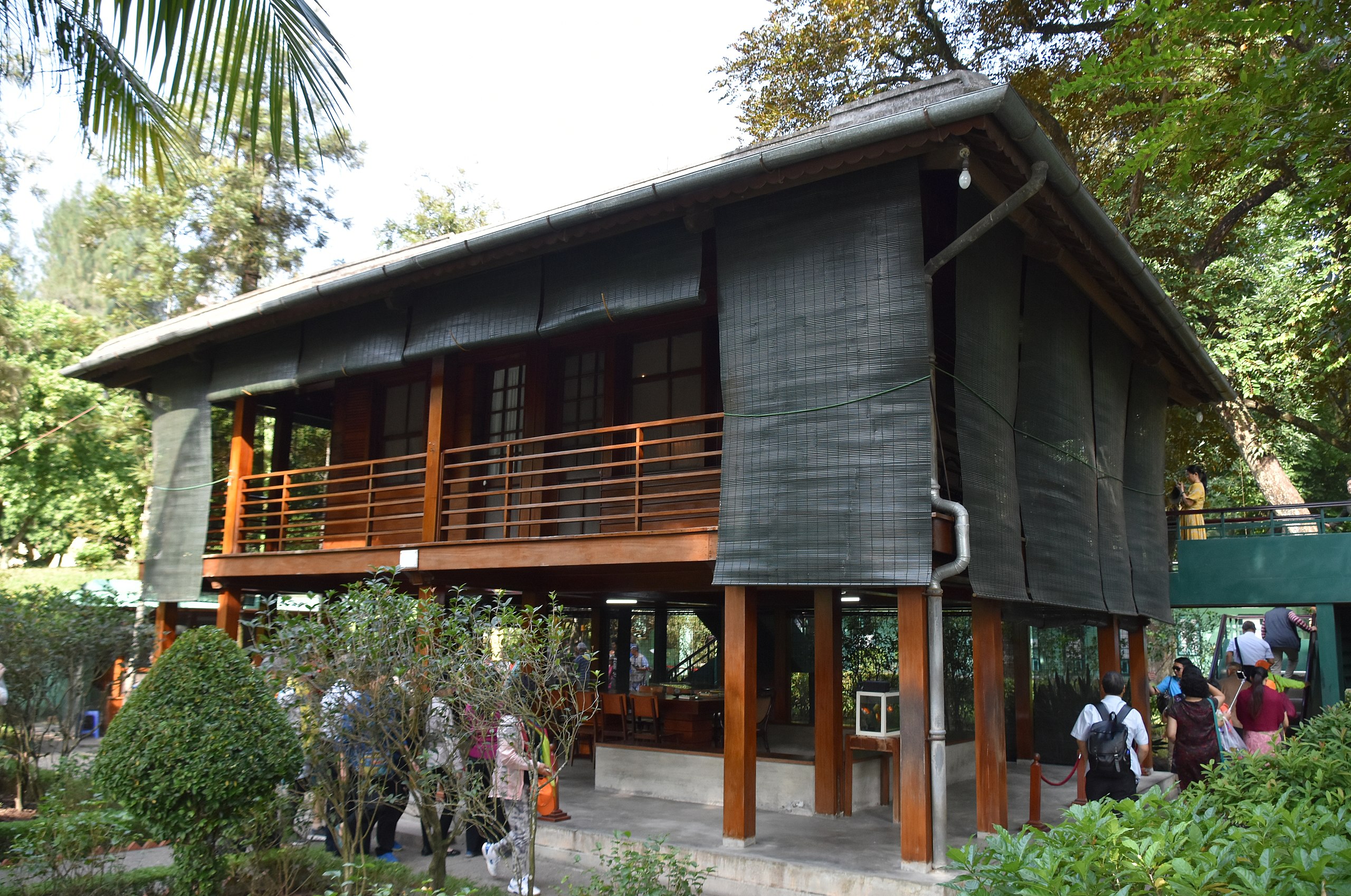
Ho Chi Minh’s House (Stilt House) is one of the places that best reflects the legendary Vietnamese leader’s modest lifestyle and personal values. Located just behind the Presidential Palace in Hanoi, this two-story wooden house is set within a lush garden and was built in 1958 in the traditional Tay architectural style. Ho Chi Minh declined to live in the luxurious palace offered to him and instead chose this simple home surrounded by nature. With its wooden structure, open veranda, and low-ceilinged rooms, the house tangibly reflects the leader’s ideals of simplicity and unity with the people.
The interior of the house is open to visitors and has been preserved in its original form. Spaces such as the study room, library, and bedroom are displayed with period furniture and personal belongings. While walking through the garden or sitting by the fish pond, visitors can feel Ho Chi Minh’s philosophy of a humble yet deeply impactful life. This house symbolizes a life in which a leader chose humility over grandeur and remained close to his people. Both historically and emotionally significant, the Stilt House is one of the most meaningful stops in Hanoi.
5. One Pillar Pagoda – A Buddhist temple with unique architecture symbolizing a lotus flower.

The One Pillar Pagoda is one of Hanoi’s most iconic and symbolic structures. Built in the 11th century by Emperor Ly Thai Tong, the temple was constructed after he dreamed of the Bodhisattva Avalokiteshvara sitting on a lotus flower. Representing a lotus blossom and standing on a single stone pillar, this small but meaningful temple symbolizes purity and enlightenment in Buddhist beliefs. Architecturally elegant and unique, the structure stands out with its square wooden shrine supported by a single pillar.
Situated in the center of a lotus pond, the temple offers both an aesthetic and spiritual experience to visitors. Damaged over time due to wars and conflicts, the pagoda was rebuilt in the 1950s and is now frequently visited by both locals and tourists. Prayers and incense offerings are common, and the pagoda is considered a significant pilgrimage site, especially for couples hoping to have children. Located in the heart of the capital, this distinctive temple is a vital symbol of Vietnam’s religious heritage and architectural creativity.
6. Temple of Literature – Vietnam’s first university, a historic site dedicated to Confucius.
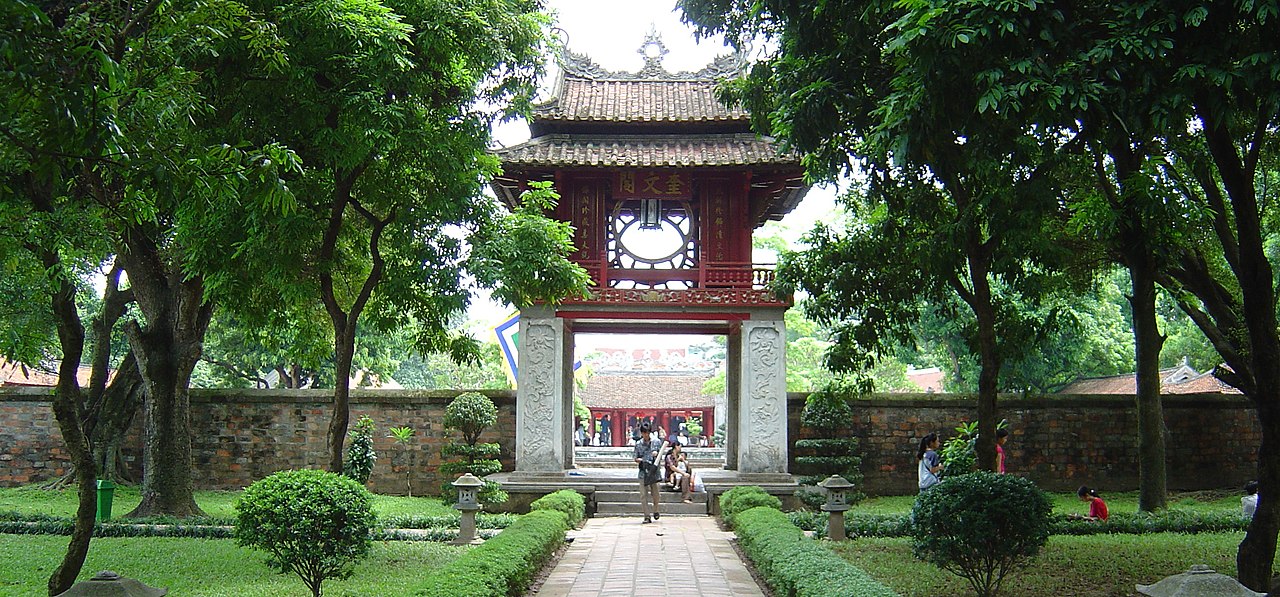
The Temple of Literature is one of the most important historical structures in Vietnam, recognized as the country’s first national university and dedicated to Confucius. Founded in 1070 by Emperor Ly Thanh Tong, the temple is located in the heart of Hanoi and symbolizes both cultural and academic heritage. Originally dedicated to Confucius and his four disciples, it later became Vietnam’s first institution of higher education in 1076 under the name “Quoc Tu Giam.” For centuries, elite students were educated here and prepared for imperial examinations.
The temple complex consists of five separate courtyards, featuring peaceful gardens, lotus ponds, stone steles bearing the names of scholars on turtle-shaped pedestals, and altars dedicated to Confucius. Each courtyard, shaped by traditional Vietnamese architecture, invites visitors into the intellectual and spiritual atmosphere of the past. Today, the Temple of Literature is a significant destination for both students and tourists, showcasing the Vietnamese people’s deep respect for knowledge, education, and cultural values. Especially during exam seasons, students flock to this sacred site to pray for success.
7. Vietnam Museum of Ethnology – A rich collection representing the country’s 54 ethnic groups.
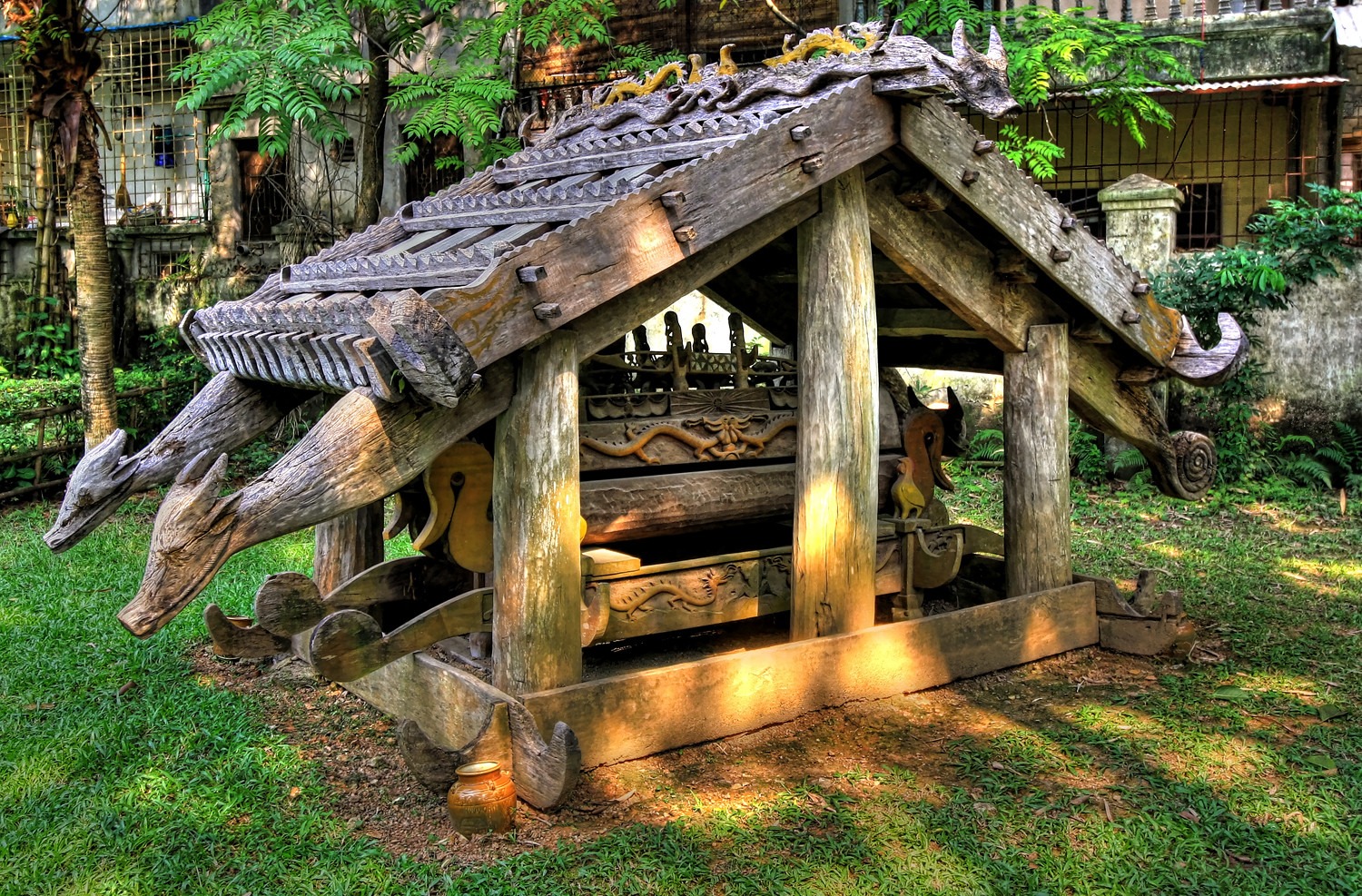
The Vietnam Museum of Ethnology is one of the must-see museums in Hanoi for those who want to explore the country’s ethnic diversity and cultural heritage in detail. Opened to the public in 1997, the museum aims to present the history, lifestyles, traditions, and arts of the 54 different ethnic groups living in Vietnam. Within the modern exhibition building, a wide collection is displayed, including traditional clothing, everyday items, ritual objects, musical instruments, and handicrafts. Each section reflects the cultural traits of a specific ethnic community, offering visitors an in-depth understanding of Vietnam’s rich social mosaic.
One of the museum’s most striking features is its open-air exhibition area. In this space, full-scale replicas of traditional houses from different regions of the country have been constructed. From stilted Tay houses to Cham structures made of mud and bamboo, and longhouses of the Ede people, many authentic architectural styles can be seen here. Visitors can enter these houses to observe architectural details and gain insight into the daily lives of ethnic communities. The Vietnam Museum of Ethnology is not only an exhibition venue but also a valuable center that deepens cultural understanding and takes visitors on a journey where the past meets the present.
8. Hoa Lo Prison (Hanoi Hilton) – A historical prison dating back to the French colonial period.
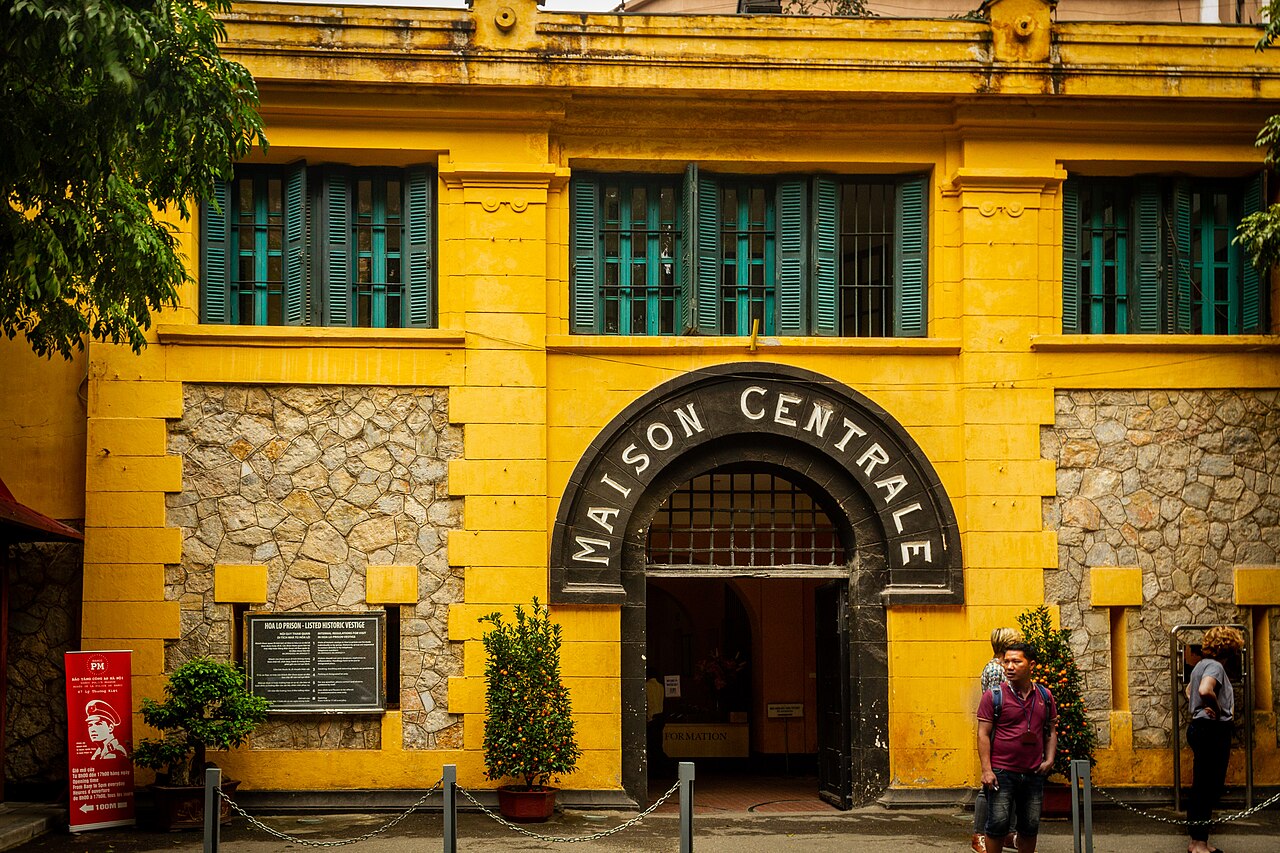
Hoa Lo Prison is a historical structure in Hanoi built during the French colonial period, leaving a deep impression on both Vietnamese people and foreign visitors due to its past. Constructed by the French in 1896, the prison was mainly used to detain Vietnamese revolutionaries and pro-independence prisoners. Over time, it became one of the symbols of Vietnam’s struggle for independence. Known for its harsh conditions, small and airless cells, torture chambers, and strict disciplinary practices, Hoa Lo serves as a testament to the suffering and resistance of the inmates held there.
The name “Hanoi Hilton” emerged later during the Vietnam War, used ironically by American prisoners of war who were detained at the site. Today, the portion of the prison open to the public functions as a memorial museum presenting this dark chapter of history. Inside, visitors can see photographs, documents, personal belongings, and the stories of Vietnamese prisoners who fought for freedom. Hoa Lo Prison is a striking and powerful stop for those wishing to take a closer look at Vietnam’s history and witness the traces of both colonialism and war.
9. Hanoi Opera House – A cultural venue notable for its French architecture.

The Hanoi Opera House is one of the most magnificent structures remaining from the French colonial period in the city. Built between 1901 and 1911, it was designed inspired by the Palais Garnier in Paris, bringing classical European architecture to the heart of Vietnam. With its neoclassical columns, elegantly decorated façade, and grand staircases, the building stands out for both its architectural splendor and historical significance. During the French era, it was accessible only to the elite, but over time, it became an important part of the cultural life of the general public.
Today, the Hanoi Opera House is one of Vietnam’s leading cultural and artistic centers. It hosts a variety of performances, including opera, ballet, classical music concerts, traditional Vietnamese shows, and theater plays. Watching a performance in its dazzlingly decorated hall with excellent acoustics is considered one of the most special experiences in Hanoi. The building is also impressive from the outside, especially when illuminated in the evening, offering a breathtaking view. Reflecting Hanoi’s cultural identity, this historic opera house is a must-see landmark for anyone interested in the arts.
10. West Lake – Hanoi’s largest lake, surrounded by cafés and temples.
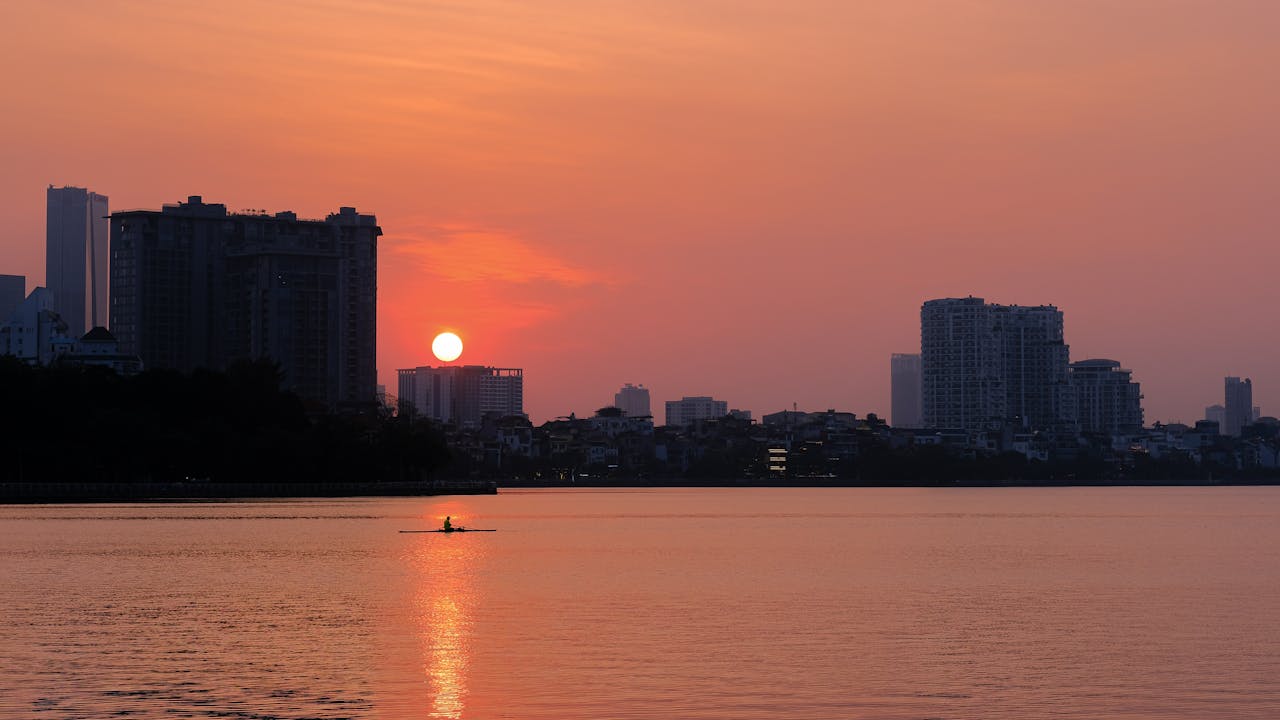
West Lake is the largest natural lake in Hanoi and an ideal retreat for those seeking peace away from the hustle and bustle of city life. With a perimeter of about 17 kilometers, it is one of the city’s main recreational areas, frequented by morning joggers, cyclists, people enjoying the scenery, and those fishing along the shore. The wide roads surrounding the lake are lined with palm-shaded cafés, restaurants, and hotels. Especially during sunset, the lake offers a romantic and enchanting atmosphere.
The area around West Lake also features significant cultural landmarks. Most notably, Tran Quoc Pagoda—one of the oldest Buddhist temples in Vietnam—is located on the eastern shore of the lake. This elegant temple attracts visitors with its historical ambiance and serene setting. Other important religious sites such as Quan Thanh Temple are also found nearby. The area provides rich opportunities for those who wish to spend time in nature while also engaging in cultural exploration. West Lake is a must-visit destination in Hanoi, reflecting both the natural and spiritual essence of the city.
11. Tran Quoc Pagoda – One of Vietnam’s oldest Buddhist pagodas, located on the shore of West Lake.
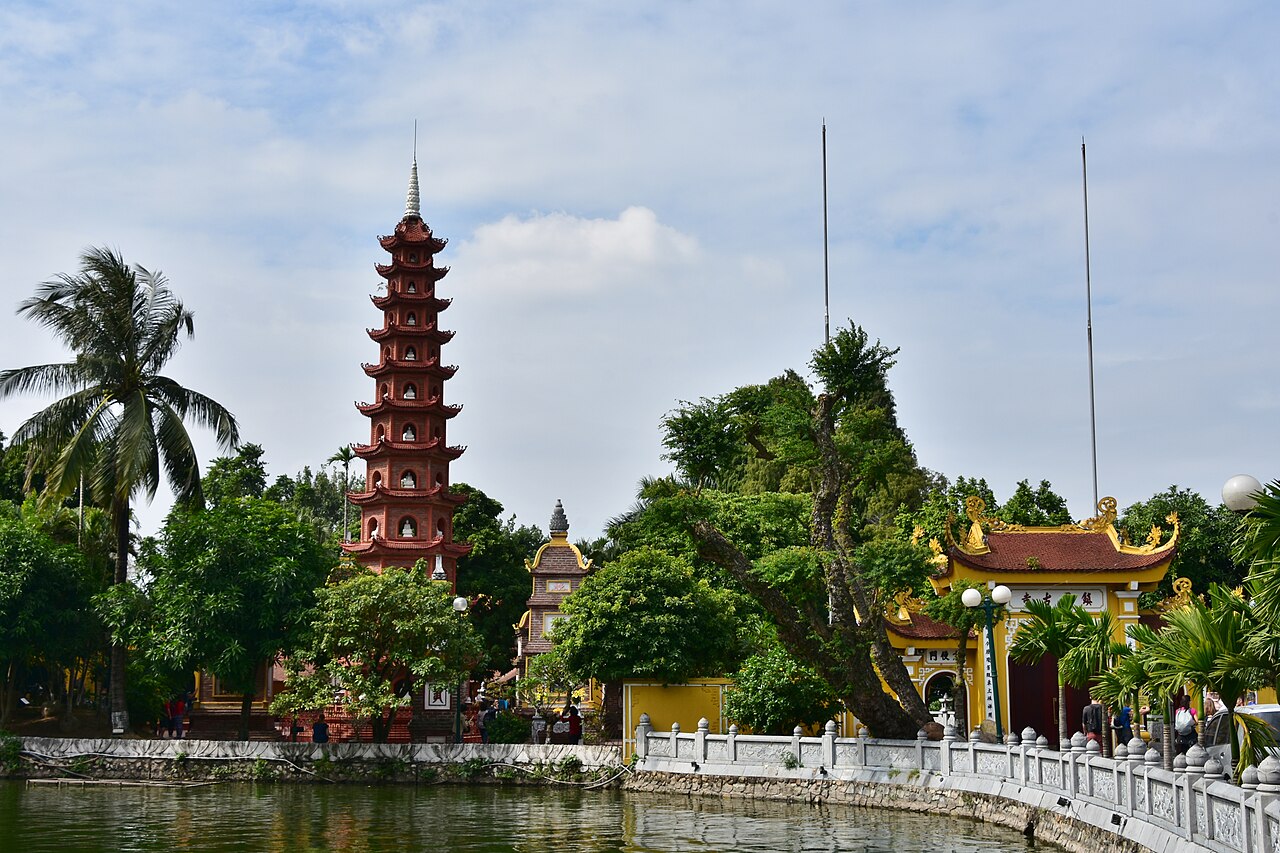
Tran Quoc Pagoda is a sacred site located on the eastern shore of Hanoi’s West Lake and is considered one of the oldest Buddhist temples in Vietnam. Originally built in the 6th century during the Ly Nam De Dynasty, the pagoda has a history spanning nearly 1,500 years, making it one of the most important witnesses to the development of Buddhism in Vietnam. Initially situated along the Red River, the temple was relocated to its current position on a small islet in West Lake in the 17th century due to erosion. The name “Tran Quoc” means “Protector of the Nation,” signifying both religious and symbolic importance.
Visitors reach the temple by crossing a narrow stone bridge and encounter one of the finest examples of traditional Vietnamese-Buddhist architecture. The most striking feature is the red-brick, 11-tiered stupa (tower), which creates a captivating reflection on the lake when illuminated at night. The garden also contains ancient statues, a bodhi tree, and various altars. Tran Quoc Pagoda is not only a religious structure but also a spiritual retreat with a peaceful atmosphere and deep historical significance, making it a must-visit destination in Hanoi.
12. Long Bien Bridge – A historic iron bridge built by the French.

Long Bien Bridge is one of Hanoi’s most iconic structures and a striking iron bridge that reflects the engineering legacy of the French colonial period. Built between 1899 and 1902 by French engineers under Gustave Eiffel’s team, the bridge was considered one of the longest in East Asia at the time. Spanning the Red River, Long Bien Bridge served as a strategic passage connecting Hanoi to the northern and northeastern regions of the country. Architecturally and historically significant, the bridge was bombed several times during the Vietnam War but was repaired each time through the dedicated efforts of the local people.
Today, the bridge is used only by trains, cyclists, and pedestrians, making it both nostalgic and functional. Visitors walking across it can witness the view of the Red River while reflecting on Hanoi’s past. With its rusted iron structure and aged tracks, the bridge carries the marks of time and continues to inspire many artists and photographers. Long Bien Bridge stands as a monument to memory in the midst of modern Hanoi and is a living symbol of respect for the city’s history.
13. Vietnamese Women’s Museum – An impressive museum focusing on the cultural and historical roles of Vietnamese women.

The Vietnamese Women’s Museum is an impressive cultural institution located in the center of Hanoi, shedding light on the historical, cultural, and social roles of Vietnamese women. Established by the Vietnam Women’s Union, the museum stands out for its exhibitions that deeply explore the multifaceted roles women have played, especially during wartime and in daily life. Its collection includes traditional clothing, handicrafts, kitchen utensils, items related to marriage rituals, and objects themed around motherhood. The lifestyles of women from different ethnic groups in the country are also presented in a colorful and detailed manner.
One of the museum’s most striking sections is the part that tells the stories of women’s resistance and sacrifices during the Vietnam War. Women’s roles as soldiers on the front lines and as nurses, couriers, and supporters behind the scenes are enriched with personal belongings, photographs, and interviews. With its modern design and multi-level layout, the Vietnamese Women’s Museum offers visitors an experience that is both informative and emotional. For those wishing to understand the strength and historical impact of women in society, this museum is a meaningful and inspiring place that must be seen in Hanoi.
14. Vietnam National Museum of History – The history of Vietnam from ancient times to the modern era.
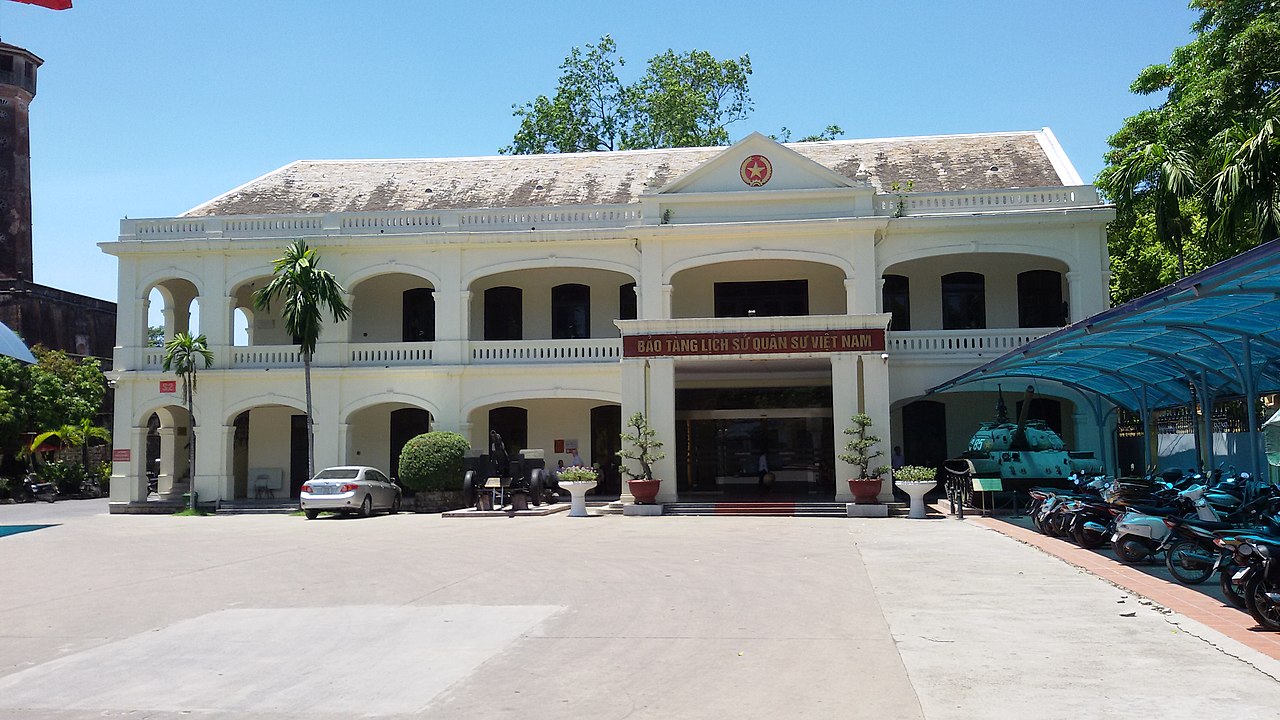
The Vietnam National Museum of History is a comprehensive museum in Hanoi that presents the country’s thousands of years of history in chronological order. Established in 1926 by the French colonial administration, the museum originally served as the building of the “École Française d’Extrême-Orient” (French School of the Far East). It stands out not only for its rich collections but also for its striking architecture, which blends French and traditional Vietnamese styles. The museum covers the Stone Age, the Dong Son culture, Chinese domination, independence struggles, and imperial periods in detail.
Visitors can closely examine numerous archaeological and cultural artifacts such as bronze drums, ancient ceramics, stone statues, inscriptions, and traditional garments. Highlights also include royal objects from the Nguyen Dynasty and exhibits depicting Vietnam’s anti-colonial resistance. With the help of interactive panels and detailed descriptions, the historical context becomes more accessible. The Vietnam National Museum of History offers not only academic insight but also an impressive journey into the roots of Vietnamese culture and the formation of national identity.
15. Imperial Citadel of Thang Long – An ancient palace complex listed as a UNESCO World Heritage Site.
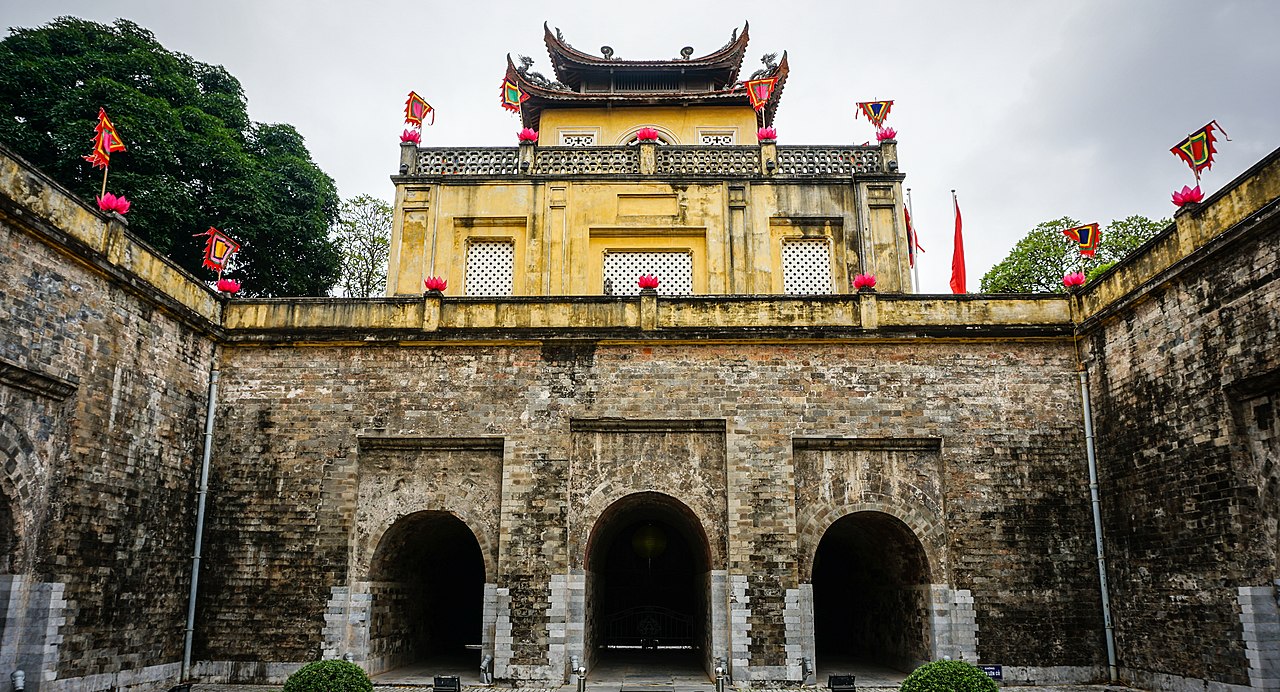
The Imperial Citadel of Thang Long is one of the most important historical structures in Hanoi, reflecting Vietnam’s state tradition spanning over a thousand years. Built in the 11th century by the Ly Dynasty, this ancient palace complex served for many years as the political, cultural, and military center of Vietnam. The name “Thang Long,” meaning “Rising Dragon,” is also known as the former name of Hanoi. Included in the UNESCO World Heritage list in 2010, the citadel offers a wealth of historical layers and archaeological remains from various periods of Vietnamese history.
Within the complex, visitors can explore the East Gate, the Kinh Thien Palace platform, the Treasury Building, and archaeological excavation sites that reveal the grandeur of the past. Excavations have uncovered ceramics, building foundations, and everyday objects from the Chinese, Champa, and Vietnamese periods. The citadel also played a strategic role during the French colonial era and the Vietnam War, with underground bunkers still preserving traces of those times. For history enthusiasts and architecture lovers alike, the Imperial Citadel of Thang Long is a fascinating stop and one of Hanoi’s most profound and impressive historical legacies.
16. Thang Long Water Puppet Theatre – A traditional theater known for its water puppet performances.
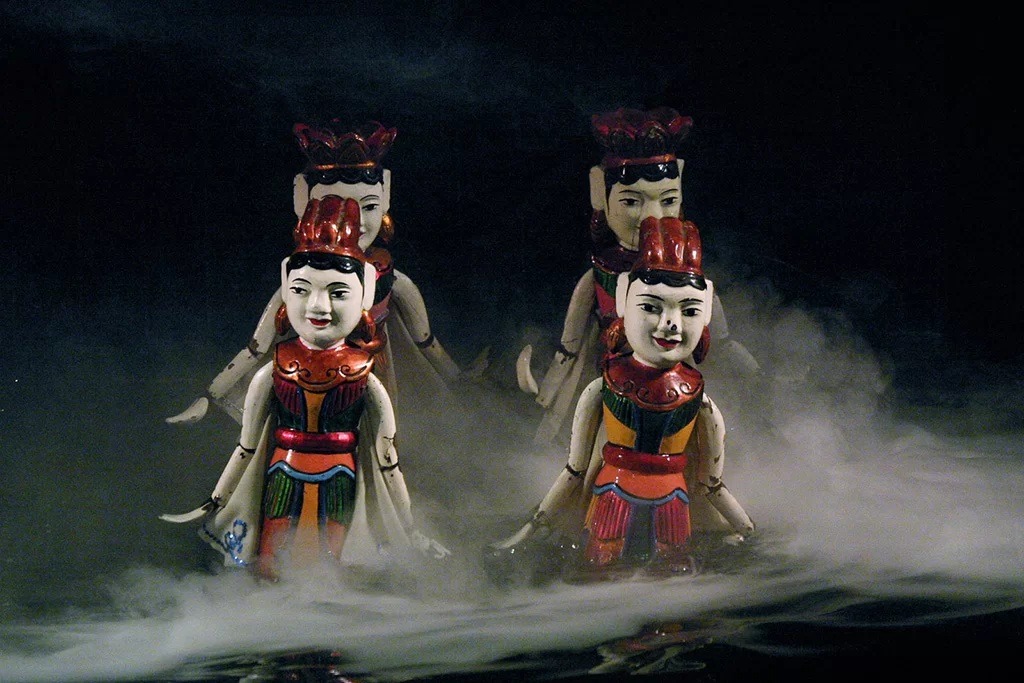
The Thang Long Water Puppet Theatre is one of the most famous and long-standing venues in Hanoi where you can experience the traditional Vietnamese art of water puppetry live. Located near Hoan Kiem Lake, this theater is a cultural hub that attracts both locals and tourists. The art of water puppetry dates back to the 11th century and was originally performed by villagers in flooded rice fields. Today, Thang Long Theatre preserves this tradition by presenting it in a modern setting with professional stage design and live music accompaniment.
During the performances, wooden puppets move across the water’s surface while musicians in the background play traditional instruments live. Themes such as legends, village life, love stories, and historical events are presented to the audience through colorful scenes and humorous storytelling. One of the most impressive aspects of the theater is the way the puppets are skillfully manipulated with hidden rods beneath the water, creating a captivating visual illusion. The Thang Long Water Puppet Theatre offers a must-see experience for anyone looking to explore Vietnamese culture in an entertaining and unique way.
17. Quan Thanh Temple – An ancient temple dedicated to a Taoist deity.
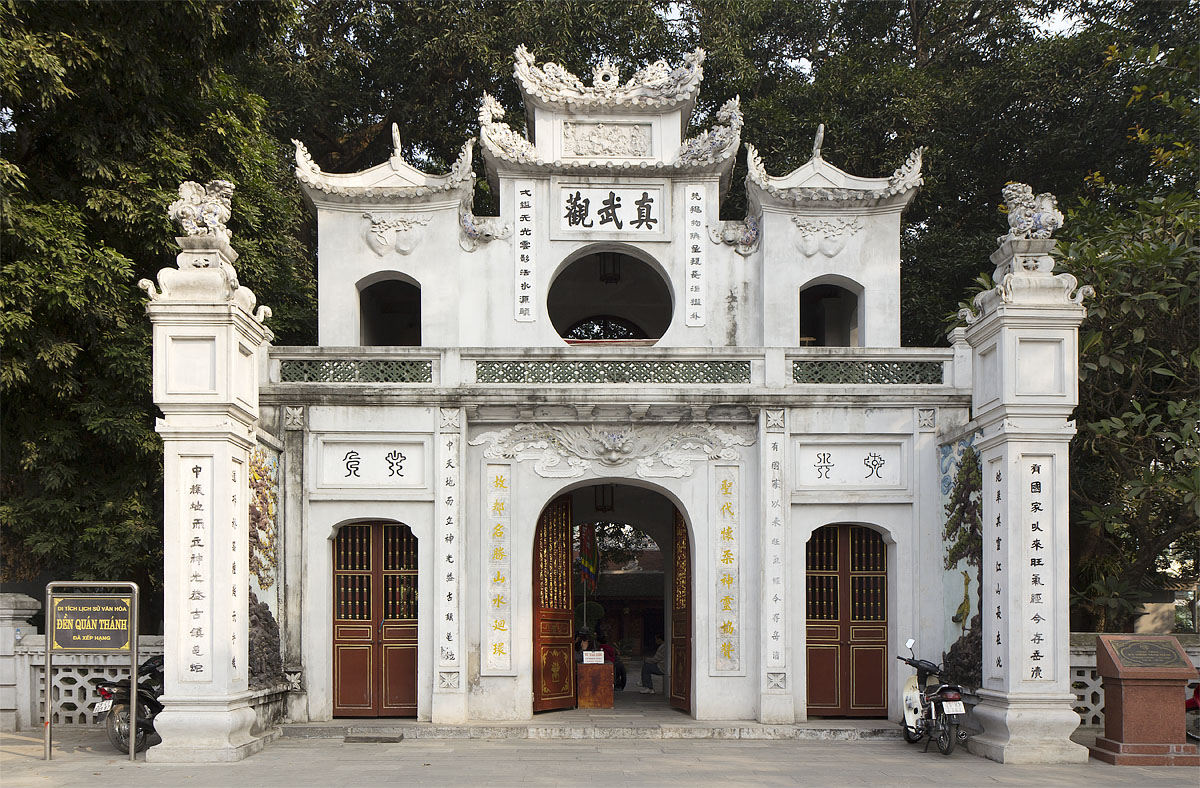
Quan Thanh Temple is a historic place of worship located on the shore of West Lake in Hanoi and is considered one of the most important Taoist temples in Vietnam. Built in the 11th century during the reign of Ly Thai To, the temple is dedicated to Xuan Wu (the Dark Warrior), the guardian deity of the north. The name “Quan Thanh,” meaning “Divine Guardian,” is given in honor of this deity. In Taoist beliefs, Xuan Wu is known for warding off evil and bringing peace to people, making the temple a significant site for those praying for peace and good health.
Upon entering the temple complex, the first striking feature is the massive bronze statue. Weighing around 4 tons and standing 3.7 meters tall, the statue was cast in the 17th century and depicts Xuan Wu seated with a mysterious expression. The temple’s courtyard also includes a tranquil garden, ancient inscriptions, bells, and traditional architectural structures. Quan Thanh Temple is not only a religious center but also a remarkable cultural heritage site that reflects the spiritual history and architectural richness of Hanoi. Its quiet and serene atmosphere offers visitors a spiritual retreat.
18. Dong Xuan Market – One of the largest markets for local products and souvenirs.
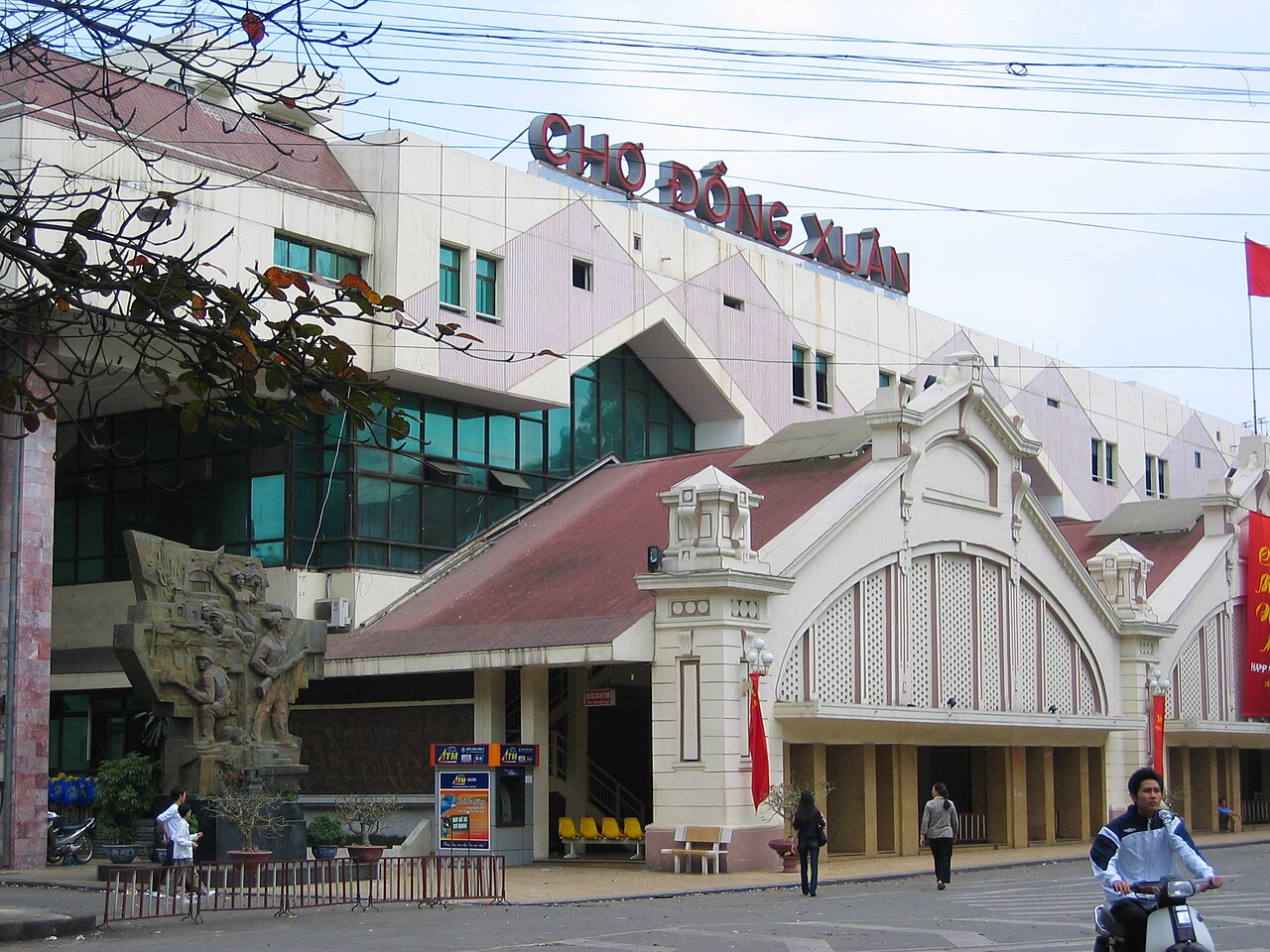
Dong Xuan Market is Hanoi’s largest and most bustling indoor market, frequently visited by both locals and tourists as a major shopping destination. Built by the French in the late 19th century, this historic market is located in the Old Quarter and serves as one of the central points of the city’s commercial life. Within its four-story structure, the market offers a wide range of products—from clothing and electronics to household items and textiles. While the ground floor mainly caters to wholesale buyers, the upper floors feature many traditional goods and souvenirs that attract tourists.
Dong Xuan Market is more than just a shopping venue; it also provides an authentic glimpse into Hanoi’s local life. Visitors can find traditional Vietnamese silks, handmade crafts, bamboo goods, wood carvings, and ethnic clothing among the many artisanal items available. In the surrounding outdoor stalls, one can also sample various street foods, fresh fruits, and spices. For those wanting to shop while experiencing the cultural fabric of Hanoi, Dong Xuan Market offers a lively and colorful experience not to be missed.
19. Ba Dinh Square – A symbolic site where the Declaration of Independence was read.

Ba Dinh Square is a large open space that holds a significant place in Vietnam’s modern history and is considered one of the symbols of national identity. On September 2, 1945, it was here that Ho Chi Minh, founder of the Democratic Republic of Vietnam, read the Declaration of Independence, marking the country’s official liberation from French colonial rule. This historic event transformed the square into a sacred and meaningful site for the Vietnamese people. The square takes its name from the Ba Dinh Uprising of the 19th century against the French and is seen as a symbol of the struggle for independence.
Today, Ba Dinh Square lies in front of the Ho Chi Minh Mausoleum and continues to serve both historical and ceremonial functions. Official parades, memorial events, and national celebrations are held in this space. Its wide grassy fields, perfectly arranged walkways, and the surrounding important structures—such as the Presidential Palace, the Ho Chi Minh Museum, and the National Assembly building—make it both a tourist attraction and a symbolic center. For visitors to Hanoi, Ba Dinh Square is not just a public space but a powerful historical landmark representing Vietnam’s journey to independence.
20. Truc Bach Lake – A peaceful walking area that has witnessed historical events.
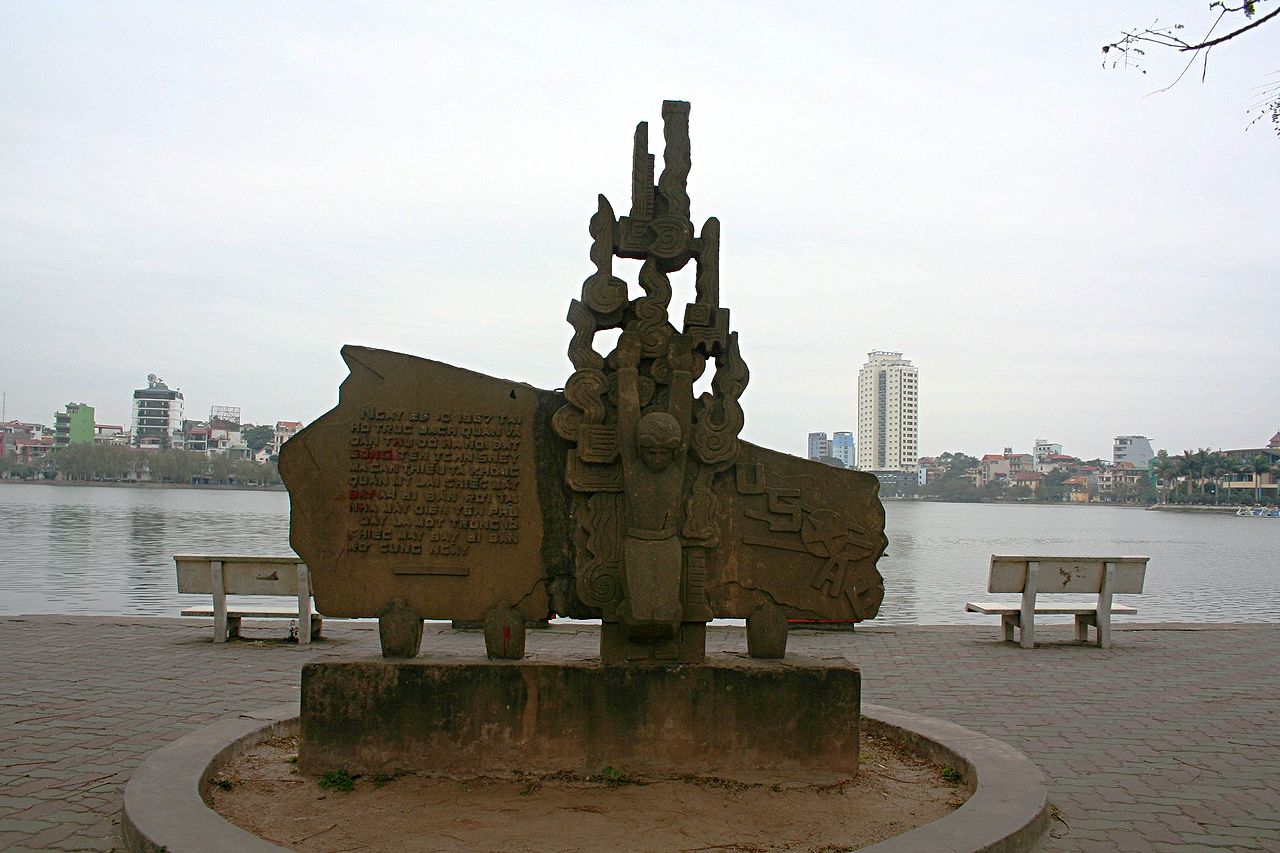
Truc Bach Lake is a small but historically significant lake located in the western part of Hanoi, right next to West Lake. Created artificially in the 17th century by separating it from West Lake, the lake offers a peaceful walking route with its calm atmosphere and surrounding green spaces. The area around the lake comes to life especially in the mornings, with locals exercising, people taking walks, and visitors relaxing while enjoying the view. With its quietness and natural beauty, Truc Bach Lake is an ideal retreat for those looking to escape the bustle of the city center.
One of the most notable historical events associated with Truc Bach Lake occurred during the Vietnam War in 1967. U.S. pilot John McCain parachuted into the lake after his plane was shot down and was subsequently captured. This event brought the lake international recognition, and a small monument dedicated to McCain stands by its shore. Additionally, around the lake, visitors can find small stalls offering traditional handmade items and street food. With its historical stories and serene setting, Truc Bach Lake is one of Hanoi’s lesser-known yet compelling destinations.
